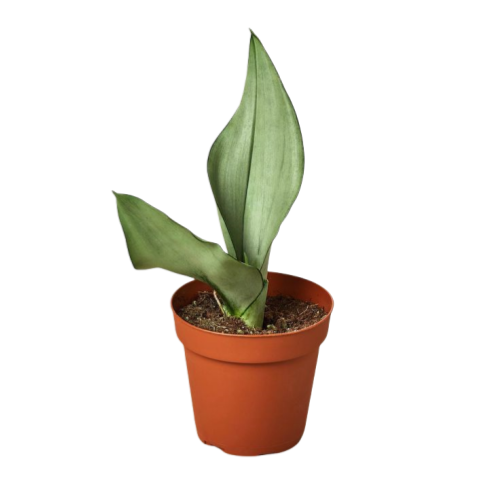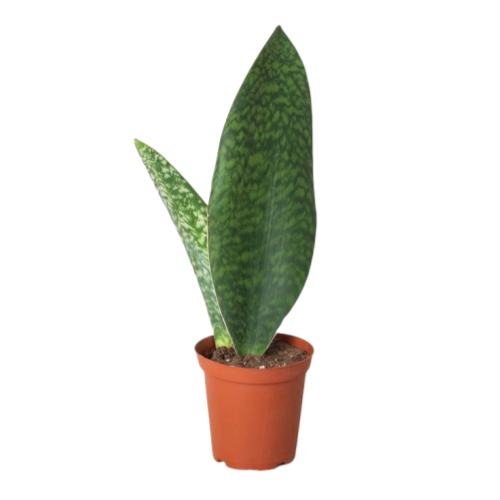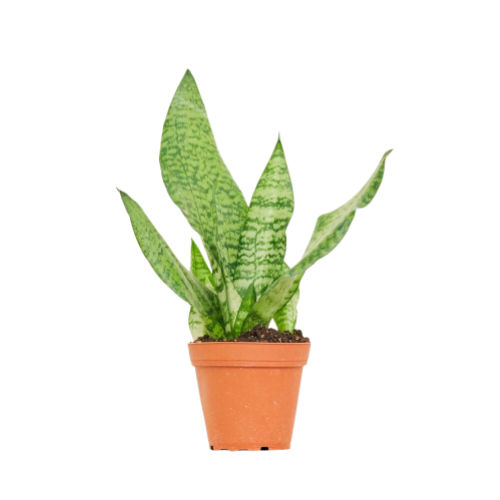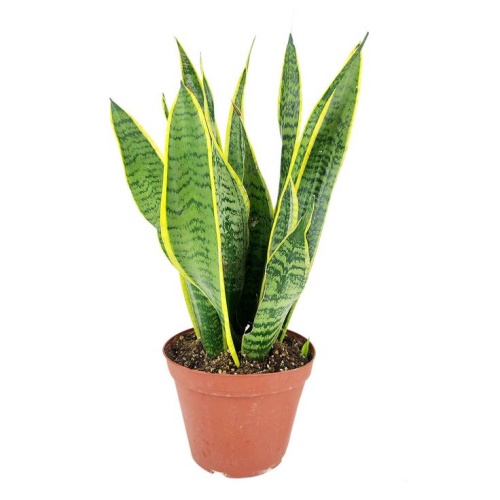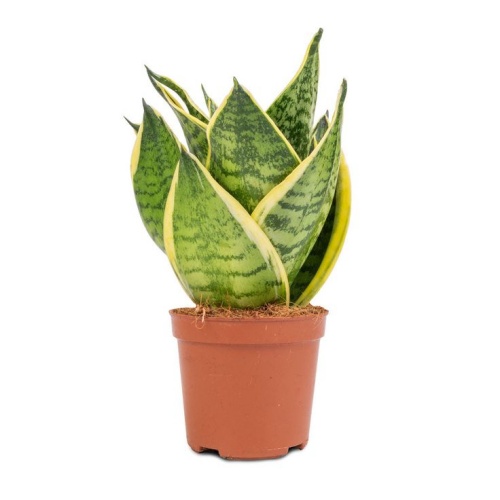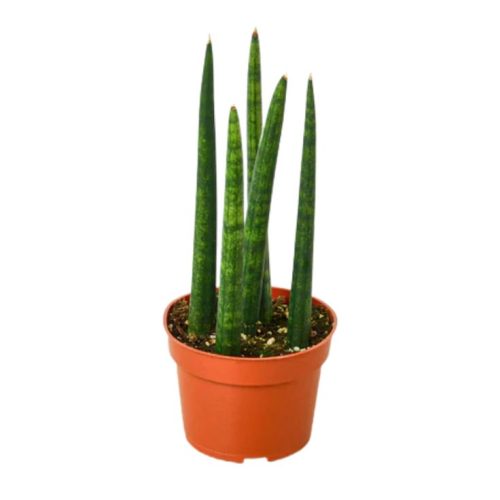Sansevieria La Rubia
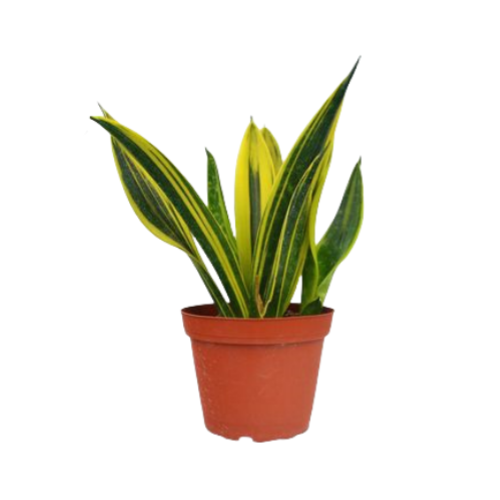
- Botanical Name: Sansevieria trifasciata ‘La Rubia’
- Family Name: Asparagaceae
- Kakau: 2-5 Inch
- Te pāmahana: 12 ℃~29℃
- Others: Bright indirect light, drought-tolerant.
Tirohanga whānui
Whakaahuatanga Hua
Tropical Stripes & Style: The Sansevieria La Rubia’s Low-Effort, High-Impact Greenery
The Striped Wonder: La Rubia’s Tropical Charm
Sansevieria La Rubia, scientifically known as Sansevieria trifasciata ‘La Rubia’, originates from the tropical regions of West Africa, ranging from eastern Nigeria to the Congo, and is also naturally found in Madagascar and India.
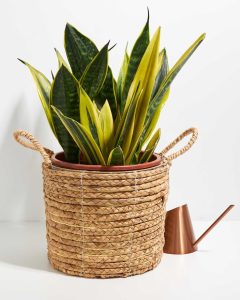
Sansevieria La Rubia
This plant is renowned for its striking yellow and dark green striped leaves. The sword-shaped leaves feature a unique combination of yellow and green, with each plant’s leaves exhibiting a distinctive color and stripe pattern, making each Sansevieria La Rubia truly one-of-a-kind. In terms of leaf morphology, they typically grow upright, forming a basal rosette, with long and narrow leaves. The edges are usually green, while the center of the leaves display silver-gray or yellow stripes, making Sansevieria La Rubia Tu atu i roto i nga tipu maha na tona tae ahurei me te ahua.
The Low-Maintenance Diva: Sansevieria La Rubia’s Easygoing Green Lifestyle
-
Taimāmā: Sansevieia La Rubia e pai ana, ka taea te huri ki nga tikanga iti, engari ko te rama maama te awhina i tana tae rau hihiri. Ko te ra tika kia karohia i te mea ka taea te whakakore i nga rau.
-
Wai: Ko tenei tipu he tino tauraki, me te whakainu me puta i muri i te maroke o te oneone. I roto i te taiao kaainga toharite, koinei pea te whakainu i ia 4 wiki, engari ka taea e te auau te rereke i runga i te waa, te taiao, me nga tikanga marama. Kia nui ake nga whakainu i nga wa katoa ka hiahiatia i nga marama mahana.
-
Oneone: Kei te hiahia kia pai te horoi i te oneone kohua, penei i te whakamahi mo te cacti, i te ngoikore ranei, ki te whakatau i ona ahuatanga tipu. Ko te ranunga onepu, a te Perlite, me nga mea whakato, ka awhina i te whakarato i nga otaota me nga matūkai e tika ana.
-
Te pāmahana me te haumākū: Ko Sansevieia La Rubia te tipu pai i te pāmahana o te 60 ° F ki te 85 ° F (16 ° C ki te 29 ° C) ka taea te whakaae ki te tino iti. He pai te whiriwhiri mo nga taiao hau maroke i te mea kaore e hiahiatia kia tino pai te tipu.
-
Whitikatanga: Apply a balanced liquid fertilizer every 4-6 weeks during the growing season (spring and summer). Reduce fertilization in the fall and winter when the plant’s growth slows down.
-
Te tapahi me te tiaki: Sansevieria La Rubia requires minimal pruning. Remove any yellowing or damaged leaves to maintain the plant’s appearance and health. Repot every 2-3 years to refresh the soil and accommodate its growth.
Green Guardians: Te iti-tiaki, te ahua-nui o Sansevieias
Ko Sansevieia La Rubia me ona momo tipu rite, penei i te Sansevieria Trifasciata me Golden Haanii, i nga rohe o Awherika me nga rohe tonga o Ahia. Ko enei tipu e aroha ana mo o raatau paanga me te whakarite i nga whakaritenga tiaki iti. Ka taea e ratou te whakariterite ki nga tikanga maama me nga tikanga taiao, mai i te ra ngawari ki nga waahi maama iti, a he iti te wai e tika ana na te matotoru o te toa, he rite ki te toa.
These Sansevieria species are known for their unique aesthetic appeal. Their long, upright leaves range in color from green to nearly black, often adorned with distinctive patterns, such as the yellow edges of Short Leaf Sansevieria (Sansevieria trifasciata ‘Hahnii’) and the silver leaves of Silver Short Leaf Sansevieria (Sansevieria trifasciata ‘Laurentii’). The decorative appearance of these plants makes them a popular choice for indoor decoration.
Beyond their beauty, Sansevieria La Rubia and similar varieties are also favored for their air-purifying capabilities and oxygen release at night. NASA’s clean air studies have shown that these plants can filter toxins such as formaldehyde, benzene, and trichloroethylene, helping to improve indoor air quality. They release oxygen through photosynthesis at night, making them suitable for placement in bedrooms to support better sleep. These health benefits, coupled with their easy-care characteristics, make these plants an ideal choice for homes and offices.





